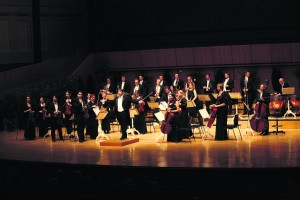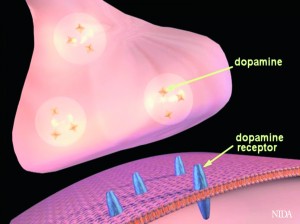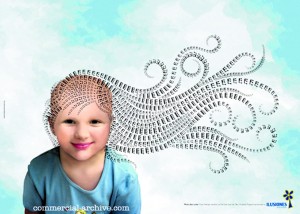SATURDAY, 29 JANUARY 2011
‘Brain injury’ is a simple term with complex implications. It describes a variety of causes that can lead, among other effects, to reduced physical function, problems with language comprehension and expression, and memory impairment, possibly putting survivors at greater risk of depression.Maximising a person’s abilities after brain injury is vital to improve their quality of life and many innovative therapies have been developed to help restore lost functions and aid in treating depression. One technique which is gathering support is music therapy. The ability of music to affect our mood, at turns both relaxing and uplifting, has long been recognised. It is clear that, to appreciate this art form, our brains conduct a detailed analysis. The introduction of imaging techniques such as functional magnetic resonance imaging (fMRI) has enabled researchers to map how music is processed in a living brain.They found that several disparate areas of the brain are stimulated when listening to music, and yet more are activated whilst playing it. This makes music an ideal medium with which to access the brain during rehabilitation.
Processing sounds, such as music, starts with the auditory portion of the inner ear (cochlea), which sorts complex sounds into their constituent elementary frequencies. This information is then relayed along the auditory nerve, finally reaching the auditory cortex in the brain, which analyses the music in terms of volume, pitch, melody and rhythm.
A vast network of connections then activates regions all over the brain that perform diverse operations. The cerebrum keeps music in working memory and remembers if a tune is familiar. It is also the location of the motor cortex, which helps to control body movements. The cerebellum, a vital control centre for reflex actions, balance, rhythm and coordinating muscle movement, creates smooth and integrated motion when hearing or playing music. Broca’s area additionally supports the timing and sequencing essential to music, speech and movement, and the frontal lobe is involved in the planning and coordination needed to play an instrument.
Our emotional response to music, such as the feelings of joy, sadness and excitement, comes from the limbic system, deep inside the brain. Music primarily stimulates a structure called the ventral tegmental which is linked to feelings of pleasure and is also activated by eating, sex and drugs. An area called the amygdala, which is linked to negative emotions such as fear, is normally inhibited when listening to music.
Music therapy was initially introduced in order to inhibit such negative emotion, while promoting emotional expression and support. For patients with impaired cognitive function, frustration often comes from the inability to express feelings. Listening to songs which reflect these emotions can lessen the isolation and, by substituting their own words for those of popular songs, patients can begin to express themselves. As cognitive ability improves, it may become possible for entirely new lyrics to be written allowing better communication.
Different types of music have varying uses during therapy. Music with a strong rhythm can stimulate brainwaves to resonate in sync with the beat, with faster tempos bringing sharper concentration and more alert thinking, and a slower one promoting a calm, meditative state. In this way, using an up-beat song can help brain injury survivors to focus on a task and improve their attention. These songs can also promote music making with the therapist or within groups to help build personal relationships and improve behaviour through feelings of inclusion. This technique has even shown some promise in treating autistic children who find social interaction difficult.
Alterations in brainwaves can also change other bodily functions. Listening to music with a slower tempo can slow breathing and reduce heart rate, helping to prevent stress and promoting relaxation. There is some indication that music can also affect levels of various hormones and trigger the release of pain—relieving neurotransmitters. Amongst other benefits, this can lower blood pressure which can reduce the risk of stroke and other health problems such as cardiovascular disease. It may also explain why premature babies are less stressed when music plays in the neo—natal ward, aiding their development.
Music therapy can also be beneficial to sufferers of neurodegenerative diseases such as Alzheimer’s. Apart from the calming effects and social interaction already discussed, music can trigger memory. When the brain recognises a familiar song it may stimulate a pathway to memories that are otherwise inaccessible, helping patients to reminisce and connect with friends and family. In rehabilitation from brain injury, music can be used as a mnemonic device to access, aid and sometimes rebuild memory function.
In recovering functions such as memory it appears that the brain is able to create new connections to bypass damaged areas. When we learn, neurons are activated and networks are created between different brain regions. If these networks are disrupted following neurological trauma, the brain is capable of plasticity—utilising the remaining tissue and reorganising its function to develop new pathways. Exposure and experience reinforce these new connections so that learning and training can help rewire the injured brain and recover as much ability as possible. As we have seen, music connects many areas in the brain and can help drive reorganisation.
This discovery has led to the use of music in rehabilitation of motor control. Due to the connections between the auditory and motor systems in the brain, musical rhythms can be used to help prime the motor system and drive timing during movement. Auditory cues act as an external timer to which patients try to synchronise their actions. By following such cues, recovering stroke patients are able to walk faster and with better control, reinforcing the improvements with long-term training. In a study that worked on arm movement in stroke patients, imaging showed that therapy had triggered brain plasticity, with additional regions being activated. Music and rhythm have also proved beneficial for Parkinson’s patients, quickening their movements and acting as a trigger and preventing the sudden halt of motion frequently seen in Parkinson’s sufferers.
In addition to loss of motor control, damage to the left side of the brain can leave stroke patients with aphasia—the inability to speak. Since music utilises so many areas of the brain, patients are able to bypass injured speech centres by singing, which relies mainly on the right side of the brain, rather than saying what they want to convey. By gradually removing the melody some patients are able to retrain the brain and regain their speech.
The true power and beauty of music is revealed in its ability to heal the brain. More than melody, more than expression, it is an enjoyment hard-wired into our consciousness—an instrument whose value we may have yet to fully appreciate.
Lindsey Nield is a PhD student in the Department of Physics



